Article content
13 August 2014 by David Ward
A guide to the best of Malaysia's remarkable nature and wildlife, island and beaches, cities, hotels and resorts
It's hard to imagine a country that ticks quite as many boxes as Malaysia. With a rich history spanning thousands of years and almost as many cultures, from traditional Malay to Chinese, Indian, Portuguese, Dutch and British, this incredible country of two halves - one on the populous peninsula, the other across the South China Sea on the northern tip of the island of Borneo - offers a diversity that is in many ways unique to Southeast Asia, and its this diversity that is reflected in the many languages, cuisines and religions of its people, as well as its spectacular landscapes and abundance of wildlife.
Throughout the Malaysian Peninsula and the Bornean states of Sabah and Sarawak, visitors will discover magnificent, palm-fringed beaches; colourful reefs boasting an incredible array of marine life; and endless winding rivers, which make their way through the heart of centuries-old rainforests where birds, reptiles and mammals including proboscis monkeys, pigmy elephants, leopards and orangutans make their home.
Here we take a look at the very best of this remarkable country, looking at adventure and nature, beach holidays and city stopovers and the top spots in the country to enjoy some much needed pampering at some of Malaysia's best hotels and resorts.
Adventure and Nature
Taman Negara National Park
Rafflesia, orchids, ferns and towering trees abound in this protected area that comprises one of the world's oldest tropical rainforests. More than 300 species of mammals are known to live here, although it can be difficult to spot them. Nevertheless, there's a good chance of glimpsing monkeys, deer, tapirs - and if you're really lucky - even elephants, tigers, leopards and rhinos. The real joy, however, is simply being in this unspoilt and undisturbed environment, which as well as having fabulous flora and fauna is also home to the nomadic Batek people, one of Malaysia's aboriginal groups.
Stay at the Mutiara Taman Negara, the only resort located inside Taman Negara National Park, which provides plenty of opportunities for experiencing the surrounding jungle, river rapids, mountains and caves. Knowledgeable local guides lead a range of walks and tours, and guest accommodation is in a choice of bungalows, chalets, dormitories or tents.

Cameron Highlands
A trip into the Cameron Highlands provides a chance to follow the example of colonial administrators, who headed into the hills to get away from the humidity of the lowlands. Here, visitors can see tealeaves being picked and packed at the Best of Highlands plantation and other tea estates, or look around fruit and flower farms. The Cameron Highlands - named after William Cameron, the surveyor who mapped the area - also play host to some highly regarded restaurants and enchanting hotels, where afternoon tea and cocktails at dusk remain treasured traditions.
Sabah
Viewing wildlife - both on land and in the clear seas along its coast - is the major attraction of Sabah, a state located in the northeast of Borneo of a similar size to Ireland. Most people arrive in Kota Kinabalu and from there the dense rainforest, craggy mountains - including Malaysia's highest peak Mt Kinabalu - and abundant reefs can be easily reached. The russet-furred orangutan, whose name means 'man of the forest' in Malay, is the best known of the incredible creatures to be found here, and can be found along the forested banks of the Kinabatangan River and the dense jungles of Danum Valley, but proboscis monkeys, sea turtles, saltwater crocodiles, a wealth of bird species and enormous rafflesia flowers should not be missed either. Head to the small vallage of Sepilok on the outskirts of Sandakan, home to the Sepilok Orangutan sanctuary, where visitors can get up close to these amazing apes, see the younger one feeding, and learn about the remarkable conservation work being carried out there, rehabilitating rescued orangutans with the aim of releasing them back in to the semi-wild of the surrounding rainforest.
Sarawak
A land of adventures, where jungle-dwelling tribes live in riverside longhouses and headhunters used to roam, the state of Sarawak is everything one imagines Borneo to be. Its ancient rainforests, broad rivers and vast limestone caves have supported human life since prehistoric times. Today, Iban tribes comprise the largest group of Sarawak's two million people and a visit to a traditional longhouse is a major highlight.
Charles Darwin described Sarawak as "one great wild, untidy, luxuriant hothouse, made by nature for herself" and although extensive logging has greatly reduced the area of rainforest in recent years, thick greenery still covers around two-thirds of the state. The wild areas that remain are some of the most species-rich habitats anywhere on the planet.
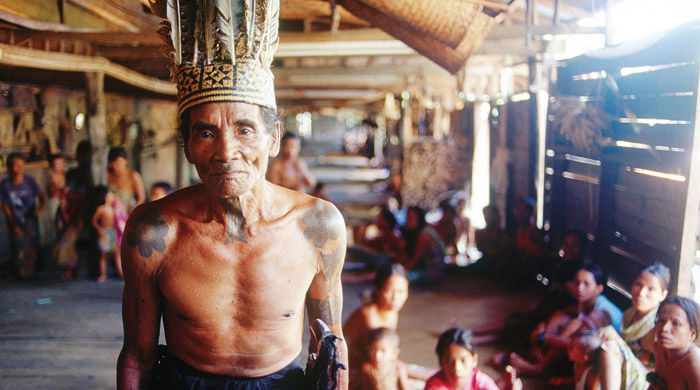
Malaysia's islands and beaches
Langkawi
An archipelago of around 100 islands close to the border with Thailand, Langkawi is Malaysia's best-known holiday destination, the so-called Jewel of Kedah State.
Once there, a scenic drive around the road that circles the main island is a great way to get a feel for the mountainous interior. Picturesque paddy fields and virgin jungle provide a generous swathe of green across much of Langkawi, while swaying palms and sandy bays dominate the coastline. Waterfalls, treetop walks and hot springs are other attractions. Along with these natural charms, the island is also known for its superb accommodation options, not least at the Datai Langkawi one of the world's leading hotels, which overlooks the delightful Datai Bay.
There is a stretch of powdery sand for everyone in Langkawi, whether you enjoy water sports and lively resorts with a choice of restaurants and bars, or prefer more secluded spots. To get away from it all, you might decide to venture out to the outer islands on a full-day tour. Some are little more than small limestone outcrops in the green-blue sea, ringed with coral - but offer fabulous snorkelling in clear seas.

Pangkor Island
Small fishing kampongs and quiet beach resorts line this charming island, once a refuge for merchants and pirates. Pangkor is accessed by ferry from the west coast town of Lumut in Perak State, around four hours from Kuala Lumpur by road. At the main resorts of Pasir Bogak and Teluk Nipah, holidaymakers enjoy pursuits such as sunbathing, snorkelling, windsurfing and sea fishing, or make for Turtle Bay, in the hope of seeing nesting turtles. A crumbling Dutch fort close to a granite outcrop known as Tiger Rock makes another interesting excursion.
Tioman Island
Picturesque hamlets dense rainforest and simple beach shacks contribute to the laidback feel of Tioman - a volcanic island on Malaysia's stunning east coast that can be reached directly from Kuala Lumpur by air. Macaques and flying squirrels are among the island's inhabitants, while sheltered bays, warm waters and gentle currents make for some fine diving amid rays, parrotfish and colourful coral. Tioman has a handful of world-class boutique resorts, private escapes for those who like their luxury a long way from anywhere.
Perhentian Islands
Rainforests and coral reefs meet at Perhentian Besar (big island) and Perhentian Kecil (small island), two picture-perfect islands fringed with palm trees and white sand, surrounded by clear seas. Snorkelling and diving are out of this world, with barracudas, kingfish, blacktip sharks and nurse sharks to be spotted. The islands are among the few places in the world where endangered leatherbacks turtles can be seen - the Perhentians are one of their remaining nesting sites.

City stopovers
Kuala Lumpur
It's been a hectic hundred years for Kuala Lumpur. In this time the former tin-mining shantytown has transformed into a heaving 21st century metropolis - a medley of mosques, museums and markets, temples and towers. The iconic 88-storey Petronas Twin Towers dominates the skyline of this modern cyber-city, with excellent views to be had from the Sky Bridge that links the two towers. Around it, offices, hotels and shopping malls fill large spaces in the business area known as the Golden Triangle.
But KL, as the city is popularly known, is not just defined by its sky-high commercial aspirations. Like Malaysia as a whole, it is home to a mix of peoples and cultures. Head out to Chinatown and Little India, for instance, and you'll see another side to the city altogether - one filled with the smells of tandoori and freshly baked roti, sizzling satay and dim sum; and the bustle of street stalls selling saris, traditional medicines, flowers and pungent durian fruits.
Penang
British, Malays, Indians and Chinese have all contributed to the heady mix of Penang. The island is very much a cultural crossroads - with night markets full of colour and clamour, sophisticated beachfront hotels, fine old colonial buildings, tantalising food, as well as Muslim, Buddhist, Hindu and Christian places of worship.
The influence of China and Britain are strongly felt in Penang, and no more so than in Georgetown, a faded but incredibly charming colonial outpost with more pre-war houses than any other city in South East Asia. Named after King George IV, it was a busy port for trade and transport for many years, but today is a far quieter place, where bicycle rickshaws trundle slowly along streets lined with incense-filled temples and colonial buildings.
There are a number of interesting temples and churches scattered around the Georgetown area of Penang. Along the so-called 'Street of Harmony' and nearby are St George's Church, the first Anglican church in South East Asia; the Kapitan Keling Mosque, founded by Indian Muslims; and the Hindu Sri Maha Mariamman Temple, decorated with carvings of deities and sacred animals. Chinese religious influences, meanwhile, are seen at the Kuan Yin Temple (Goddess of Mercy Temple), filled with the smell of sandalwood incense, and noted for a steep roof supported by dragon-entwined pillars.
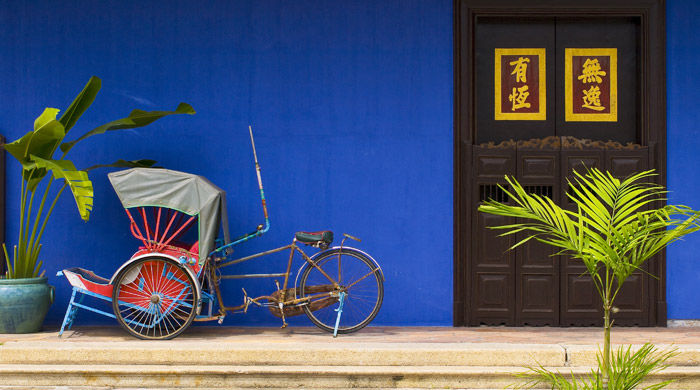
Luxury & wellness - Our favourite Malaysian hotels
Malaysia boasts a stunning selection of accommodation options from stylosh beachfront retreats with award-winning spas, to luxury lodges set in the heart of the rainforest. Here's a look at some of our favourites.
Pangkor Laut Resort
One island, one resort - that's Pangkor Laut's motto and the key to its appeal. This secluded island resort, just off Pangkor Island itself, is surrounded by two-million-year-old rainforest; the kind of unspoiled natural paradise that it's hard to believe exists anywhere in the world anymore. Villas dot the hillsides, line the beach and spread out on stilts into the sea, connected by wooden walkways. They're all wonderfully spacious, sport sleek wooden floors, king-size beds, enormous bathtubs and balconies with forest or sea views. It's no exaggeration to say Pangkor Laut's spa is among the world's best - a four-acre complex offering every kind of treatment from a Shanghai Scrub to Ayurvedic remedies. And if that weren't enough, you'll find fine-dining restaurants, chartered cruises, golf and yoga to keep you entertained. Just a three hour transfer overland from Kuala Lumpur, a stay at Pangkor Laut can be easily combined with a stay in the capital.
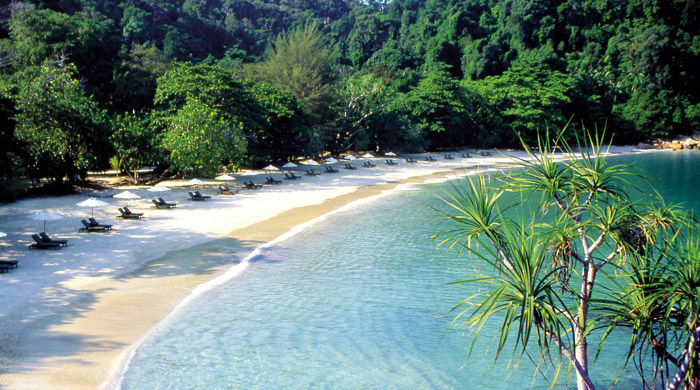
The Datai Langkawi
Opulent and exceedingly stylish, the Datai Langkawi rests within an unspoiled splash of thick and verdant rainforest, set back from a private, implausibly white beach. Rooms have cool wooden floors, comfy day beds and balconies with terrific jungle views. The outlying villas have marble bathrooms, Oriental furnishings and in some cases private pools. Not that pools are lacking elsewhere at the Datai; the two communal pools are more than enough for most. Non-motorised water sports are plentiful, ardent walkers will find a jungle to explore and a wildlife expert to guide them through it. Golfers have use of an 18-hole course, spa enthusiasts will not be disappointed and keen tennis players can rally until late on the floodlit courts.
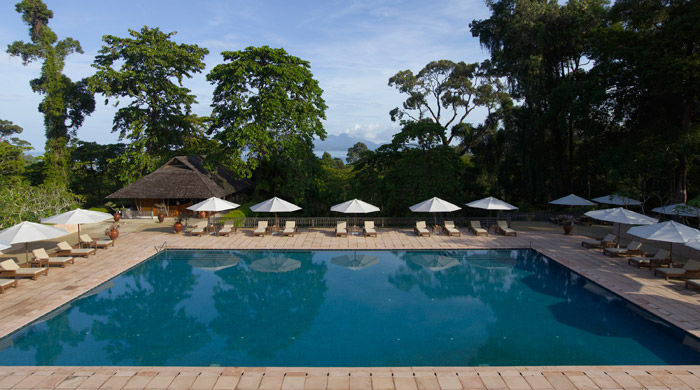
The Eastern & Oriental, Penang
Noel Coward, Douglas Fairbanks, Rudyard Kipling and Somerset Maugham are all former guests of this beautiful old hotel in Georgetown, a place frequented over the years by colonial administrators, planters and the international elite. Founded by Armenian brothers, the Sarkies, in 1885, the E&O (as it's fondly known) has become the discerning choice of travellers to Penang. It boasts wonderful views of the Malacca Strait, excellent dining, immaculate gardens, a gym, sauna and a round-the-clock butler service.
Cameron Highlands Resort
Tea plantations, rolling hills and a lush golf course provide a scenic backdrop for this colonial style hotel in the Cameron Highlands. French doors, timber-beamed ceilings and plantation shutters add a touch of nostalgia to the spacious guest rooms, which feature bespoke furniture and Jim Thompson fabrics. Tea also plays a part in the spa, where the signature treatment is a relaxing tea bath.
Tanjong Jara Resort
Designed to reflect the grandeur of 17th century Malay palaces, Tanjong Jara is a serene hotel close to the riverside town of Kuala Dungun, south of Kuala Terengganu on Malaysia's
East Coast. The region is home to some of the Malaysian Peninsula's best beaches, while nearby Tengoll Island offers wonderful diving. Guests at the resort will enjoy an award-winning spa, which has previously been voted as the world's best by Tatler, along with wonderful cuisine and the chance to enjoy the region's breathtaking nature, including guided jungle treks in the company of the hotel's resident naturalist to local sites including the highest waterfall in Southeast Asia.
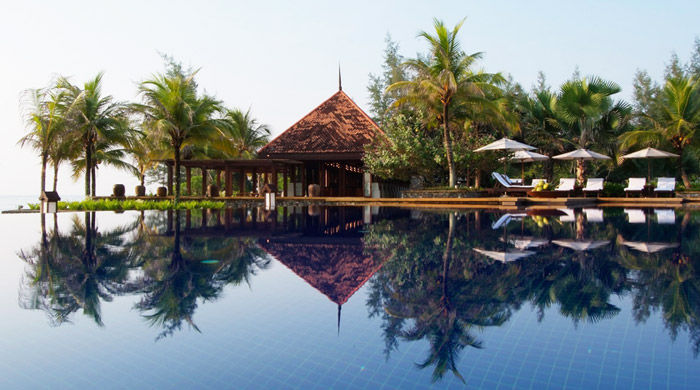
Gaya Island Resort, Borneo
Set on the small island of Pulau Gaya, part of a chain of islands that make up the Tunku Abdul Rahman National Park not far from Kota Kinabalu on the north coast of Sabah, Gaya Island Resort is an all-villa and suite resort that sets the standards for luxury living in Malaysian Borneo. As well as spacious and private accommodation set amidst the island's rainforest and with views across the mangrove and azure waters of the South China Sea, this Small Luxury Hotel of the World features an award-winning spa and the chance to explore the island's exquisite flora and fauna. A relaxing stay at Gaya Island Resort is the perfect way to round of a holiday exploring the natural wonders of Borneo.
Borneo Rainforest Lodge, Danum Valley
A multitude of birds, animals and plants can be seen at this isolated rainforest lodge in the Danum Valley. Accommodation is in wooden chalets on stilts with en suite bathrooms and hot showers, while deluxe rooms feature bathtubs on private balconies that overlook the Danum River and surrounding forest - well worth the upgrade. Experienced local guides are on hand to take guests on canopy walks, night treks and other nature tours.







